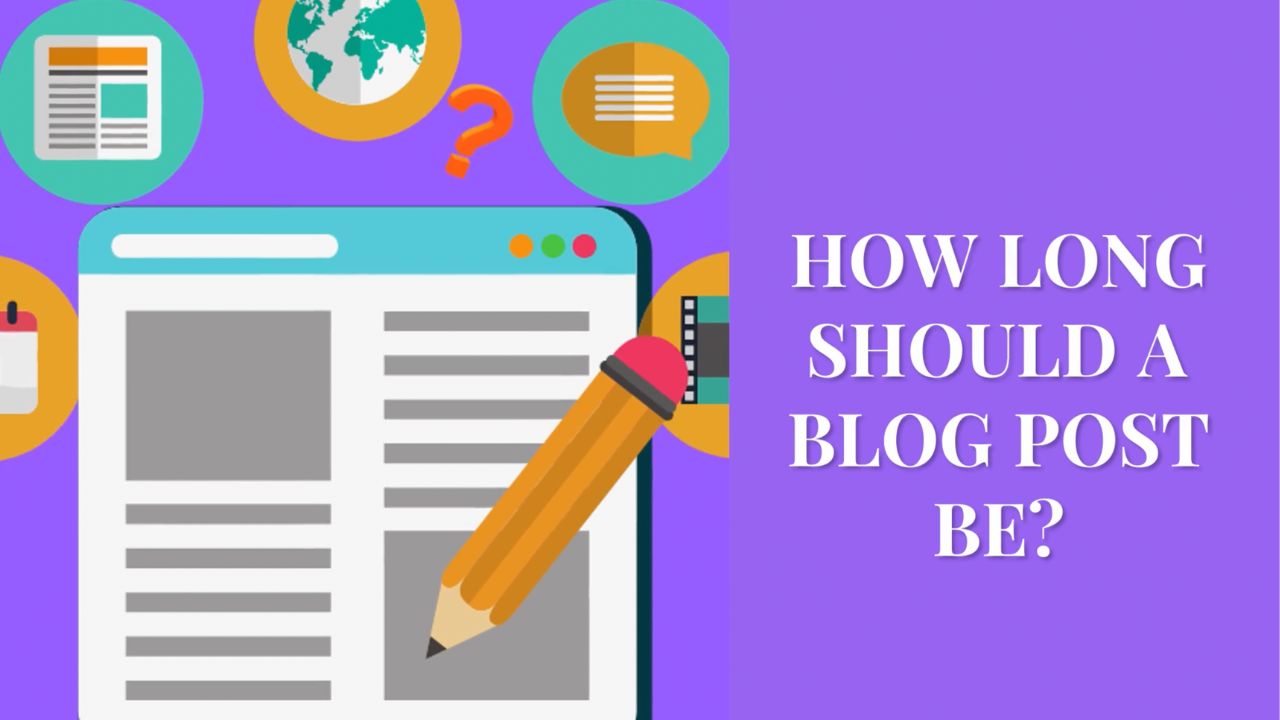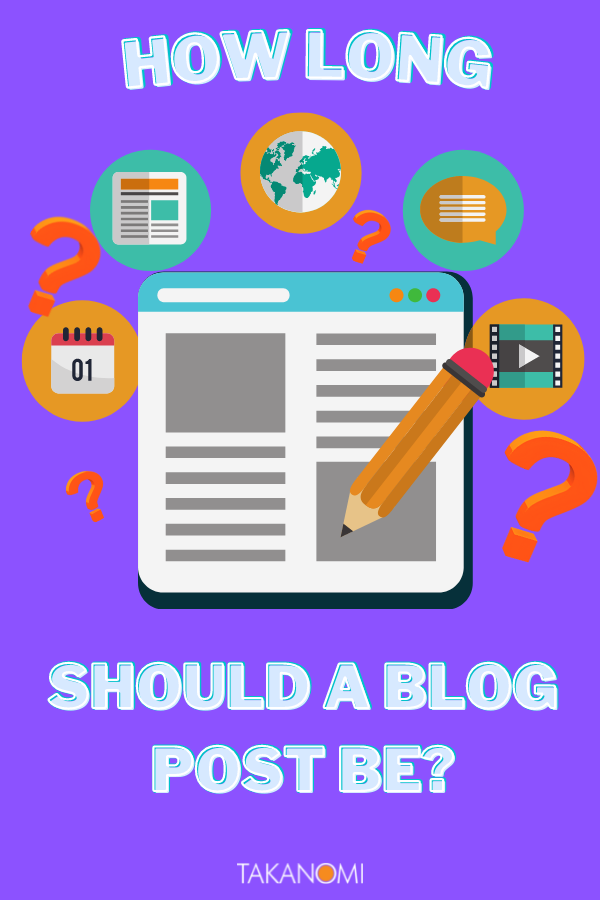It's a crucial question: how long should a blog post be for maximum impact, such as for SEO and to ensure a good reader experience?
As we all know, blogging plays a crucial role in effective online marketing, feeding a wide range of activities that grow online visibility and attract customers, including:
- Social media posts (both paid and organic).
- Repurposed content such as video for other platforms.
- Attracting prospects and customers from organic search for a wide variety of keywords.
- Growing your authority, credibility, and thought leadership.
- Lead generation—60% of marketers believe that inbound techniques (like blogging) provide the highest-quality leads.
But with so many blogs out there (600 million), and well over 7 million posts published every day, how can you rise above all the noise?
Amongst other SEO factors, one of the most important is getting the length of your content right.
Use this guide to determine the ideal length for your blog posts, based on your SEO goals, who you're trying to attract, and how you intend to promote the content.

Differing Lengths of Blog Posts
Blog posts can of course vary widely in terms of their nature and intended audience.
A journalistic news piece is hardly the same as a buyer’s guide, and an in-depth product review differs significantly from a how-to article.
Here are some broad ranges for blog post lengths, and when these might be most suitable:
- 200-500 words—these short blog posts are generally best for descriptions or brief discussions and aren’t intended to achieve much visibility on search.
- 500-1,000 words—these posts tend to be educational or journalistic in style and offer to-the-point information that can be used to initially attract readers who are new to a particular subject.
- 1,000-1,500 words—these slightly longer articles, presuming they’re well written, contain valuable content that can help to steadily build blog readership and attract organic traffic through channels such as social.
- 1,500-2,500+ words—these more in-depth posts generally attract more links, and gain more visibility in search engines like Google, leading to higher levels of organic traffic overall.
Of course, this is only a broad guide. There’s no exact formula, and it’s better to write first and foremost for your audience rather than for the sake of sticking to a strict word count each and every time.
First and foremost, to do well on search, your content should provide value.
If you’re just writing for the sake of it, with only fluff content and nothing valuable to relay to your audience, the rewards are likely to be few and far between.
One key consideration is who you’re actually writing your content for. Research the types of content your audience tends to share and engage most with.
This will help you better understand the general length of content your audience finds value in.
How Long Should a Blog Post Be for SEO?
We’ve already alluded to the fact that longer blog posts generally do better on search, attracting more search traffic overall.
Various bits of research confirm this, such as a survey of bloggers by Orbitmedia:
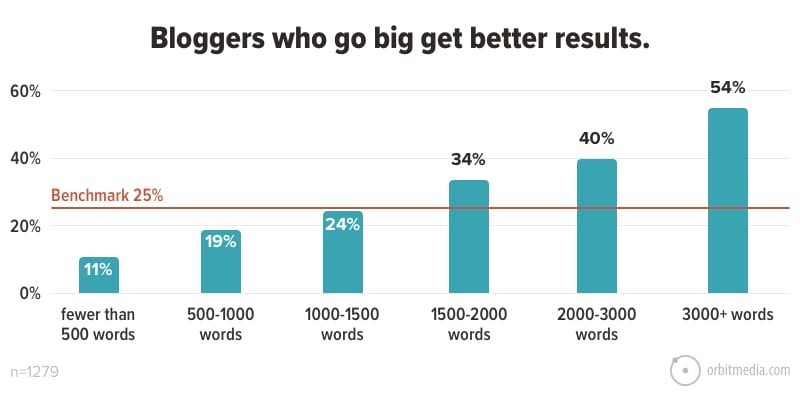
Research from Hubspot has found that, when it makes sense to do so, writing between 1,000-2,500 words helps towards optimizing your blog post for search.
And Backlinko found that the average blog post length for results on Google's first page was 1,447 words—although there's not necessarily a link between word count and ranking.
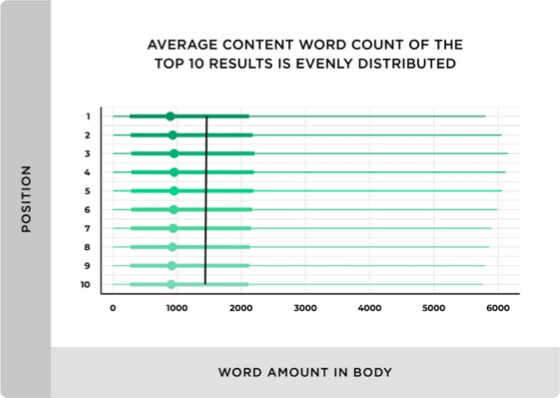
Why Do Longer Blog Posts Tend to Perform Better on Search?
One reason is that longer content contains a broader range of rankable keywords.
The longer length also allows you to say more and ultimately provide more value to your reader.
The more valuable your content, the more likely the reader is to see what else you have to say on the subjects they’re interested in, leading them to stay on your site for longer.
In general, the longer the dwell time of visitors on your website (in other words, how long they stick around after clicking through from search), the more it confirms to Google the suitability of the result in their SERPs.
Over time, this can help increase your rankings.

In addition, the longer your content is, the more opportunities there are for other blogs to link to you, and this in itself can translate into higher rankings.
Do Shorter Blog Posts Ever Do Better?
For all the value of longer blog posts, it’s important to remember the purpose of your content too.
There are some circumstances where writing longer pieces doesn’t work quite so well—and in fact a short post may perform much better!
Let’s say users are looking for a short, simple guide on how to change a lightbulb.
Few such readers are likely to want to read a 5,000-word blog post detailing the history of lightbulbs, the different types available, and maybe with a few lightbulb jokes thrown in for good measure!
Instead, they simply want easily accessible information that provides the answer they were looking for.
So while longer posts generally do better, it does depend on your topic and the type of information your readers require to meet their needs!

Optimizing Long Blog Posts for Online Readability
Of course, length by itself won’t keep people on your page.
If you’ve got a 2,500 blog post that’s essentially one big chunk of text on the page, you won’t keep visitors long at all.
Long reams of text can be incredibly off-putting, even in the offline world.
And this is more acute online, where people tend to have shorter attention spans and have been trained by the likes of social media feeds to quickly skim read most content.
If your content isn’t easy on the eyes and easy to consume, your readers will simply click back to Google in the hope of finding something more easily digestible.
So that means creating content with:
- Short paragraphs—just one or two sentences
- Larger fonts that have a good level of contrast with the background color
- Good spacing between lines—there’s no need to pack lines of text closely together!
- Relevant images where applicable to help keep the reader engaged, and to help relay information visually as well (try these paid or free stock photo sites)
- Additional visually-engaging content such as videos, and even embedded SlideShares
- Bullets wherever possible to help break up information
- Lots of headings and subheadings, along with phrases or whole sentences/paragraphs in bold and/or italics to help readers skim read and absorb the info. As a case in point...
In general, don’t skimp on white space.

- Research conducted by Human Factors found that white space in the left and right margins, as well as between paragraphs, increased the reader’s ability to comprehend the information by almost 20%.
Too many blogs still publish posts with tiny fonts, poor contrast levels, closely-packed lines, little if any visual content, and little white space… and then wonder why they perform poorly in search engines and visitors don’t stick around!
Putting these few tips into action can work wonders for your rankings.
So How Do You Decide How Long Your Blog Posts Should Be?
The good news is that if you want the length of your blog posts to be as effective as possible for your audience and the type of topics you write about, you no longer have to guess..
Tools like Surfer SEO make it possible for you to analyze competing blog posts that currently rank in the SERPs and draw up a plan for optimizing your content based on factors such as keywords, bold words, headings, and more… including the best length for blog posts in your niche.
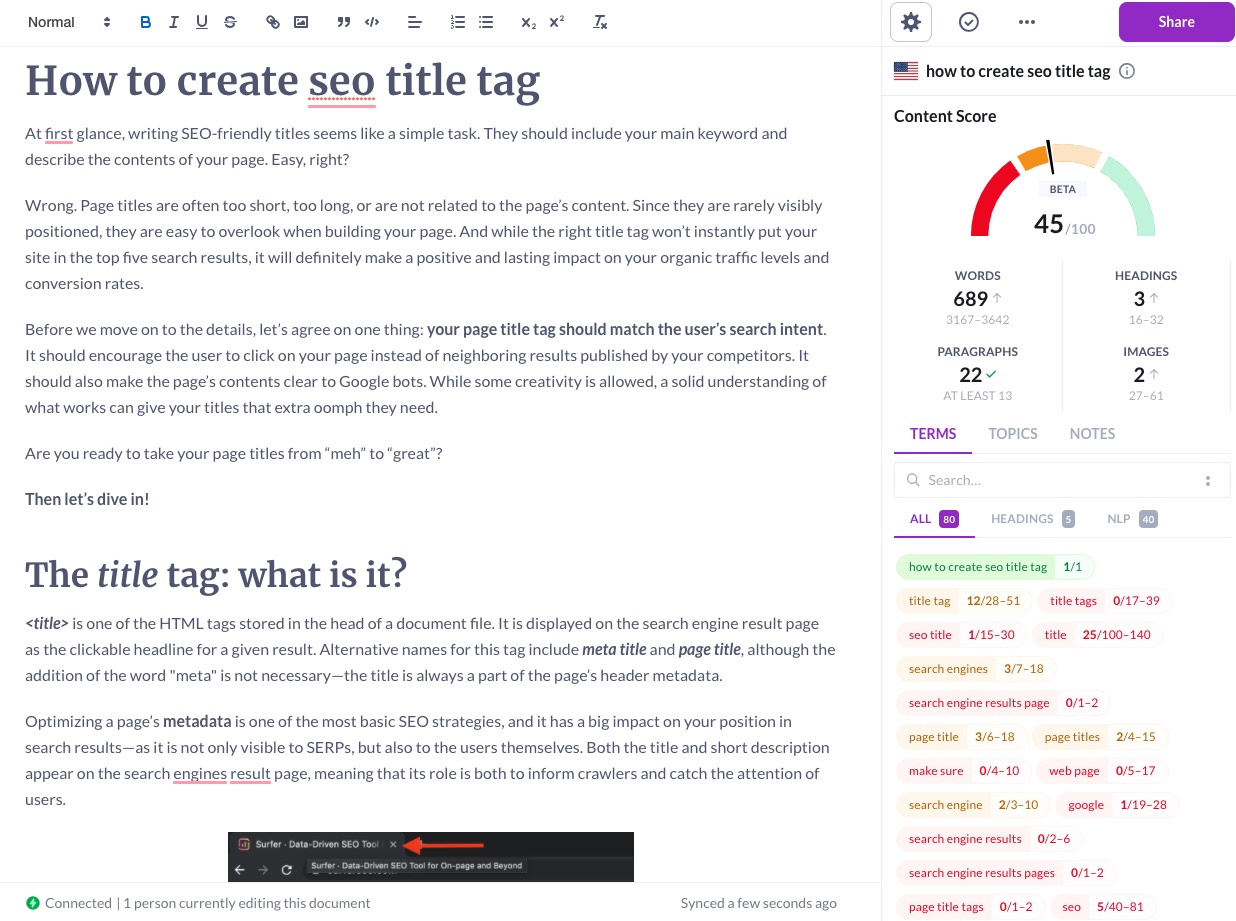
Or if you want a more manual approach, try searching the proposed title or keyword of your blog post and take a look at the best-performing articles taking the top spots in the SERPs.
Copy and paste the content into an online word counter or similar, and you’ll see the type of content length that tends to do well for your topic.
Finally... Longer Blog Posts Can Be Easier To Repurpose
With more content to work with, you can get a lot more mileage out of a longer post in terms of repurposing the content for publication elsewhere.
Just as with the original blog post, your repurposed content will tend to perform better on search when it's longer, helping boost your overall search visibility.
Here are 25 key ways each blog post can be repurposed:
Of course, you don't have to do them all, but I bet you'll find a couple of ideas you haven't even thought about before and are easy to take care of!
Frequently Asked Questions
How do I determine the ideal length for my blog posts?
Consider your SEO goals, target audience, and content promotion methods to decide on the best post length for maximum impact.
Why do longer blog posts tend to perform better for SEO?
Longer posts allow for more keywords, provide more value to readers, increase dwell time, and attract more backlinks, ultimately improving search rankings.
Do shorter blog posts ever perform better than longer ones?
Shorter posts can outperform longer ones for specific topics where readers seek concise, to-the-point information rather than in-depth content.
To Conclude
So, let’s return to our original question: how long should a blog post be?
Although there’s no definitive answer, the data does suggest that the ideal length for a blog post is definitely on the longer side when you're looking to attract visitors from search.
However, it is essential to put the reader first when creating content.
For best results, don’t just write to a particular word count for the sake of it, but focus on providing the best value you can on your topic for your visitors.
